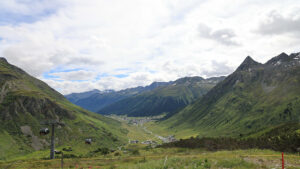WS 3.114
Past, Present, and Future Challenges for Mountain Protected Areas
Details
Full Title
WS 3.114: Past, Present, and Future Challenges for Mountain Protected AreasScheduled
Talks & Session:
2025-09-16, 10:00 - 12:00 (LT), SOWI – SR 11Talks & Session:
2025-09-16, 10:00 - 12:00 (LT), SOWI – SR 11Convener
Co-Convener(s)
Gubler, Stefanie; and Hasenöhrl, UteAssigned to Synthesis Workshop
---Thematic Focus
#IMC25, Adaptation, ConservationKeywords
protected areas, challenges
Description
Mountain protected areas are critical for biodiversity, cultural heritage, and sustainable development. However, their management faces unique challenges shaped by historical, contemporary, and future socio-ecological dynamics. This workshop aims to foster dialogue on how these challenges have evolved, their implications for current management practices, and strategies to address future uncertainties. We will examine historical trajectories in the establishment and management of mountain protected areas in the Alpine region, but also globally; analyze present-day conflicts and collaborative practices among stakeholders, including communities living in and around protected areas, conservationists, and policymakers and explore future challenges, such as climate change, globalization, and shifts in governance paradigms, and their potential impacts on mountain protected areas. This workshop is a follow up to the session on “Addressing Challenges and Exploring Solutions in Alpine Protected Areas“ (ID2811) with a slightly different focus. We will invite short impulse talks that elaborate on research gaps Past, Present, and Future Challenges for Mountain Protected Areas. These impulse talks will form the basis for joint discussions on the challenges and possible ways forward.


